This month we are covering a few of our projects that we believe support the title of this blog – that classic interiors last forever. For us, a classic interior is in harmony with the external architecture of the building, allows as much natural light in as possible, and is fitted with timeless joinery, fittings, furniture and artwork.
Our Castlecrag house, designed and built in 1973, was quite avant-garde for its time. Flat roofs and large cantilevers identify the building while large glass areas capitalise on the views and sun. One of the most striking features of the design is a raised circular ‘pod’ that forms a dining area within the open plan living areas. A circular skylight directly above the dining table accentuates this feature.
Internally shadowline detailing is found around the doors and ceilings and follows the streamlined planning. Black steel (framing windows and doors) also forms part of the all white palette, as well as terrazzo floors.
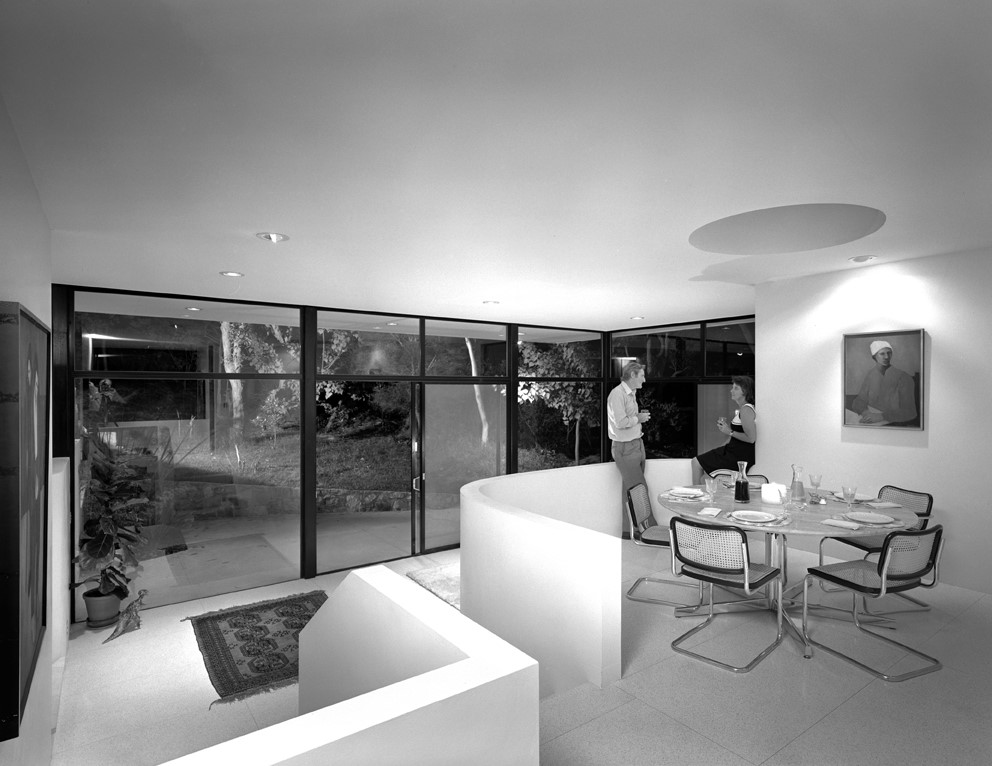
Castlecrag house: Photo taken by Max Dupain in 1973 – view of the raised dining area
The furniture is simple and classic – Marcel Breuer Cesca chairs sit around the dining table and a Le Corbusier chaise lounge LC4 features in the main living room along with a Mies van der Rohe ottoman stool and Le Corbusier LC1 sling basculant armchairs.
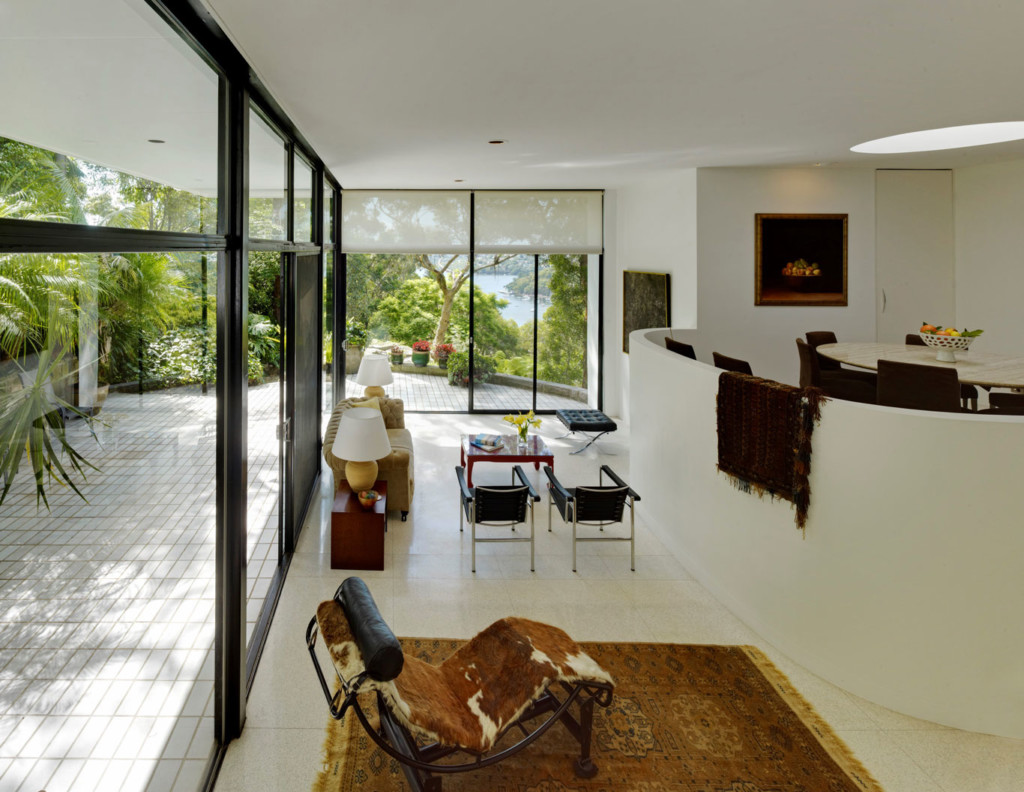
Castlecrag house: Photo taken by Michael Nicholson in 2015 – view of the living room and raised dining area
The original clients were living in the house up until two years ago – A testimony to the timeless design!
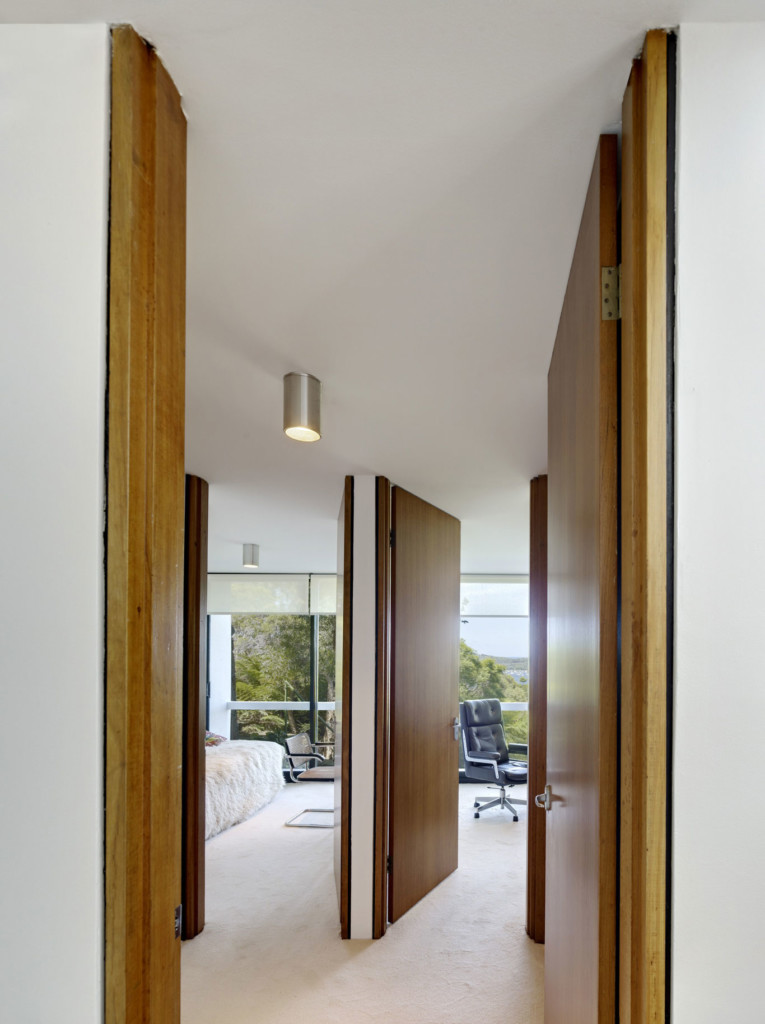
Castlecrag house: Photo taken by Michael Nicholson in 2015 – view of the bedrooms featuring full height doors and black shadowline details
Another more recent house is our Block House in Pearl Beach. The interior finishes feature concrete block walls (used externally), off-form concrete, terrazzo floors, stainless steel fittings and timber veneer.
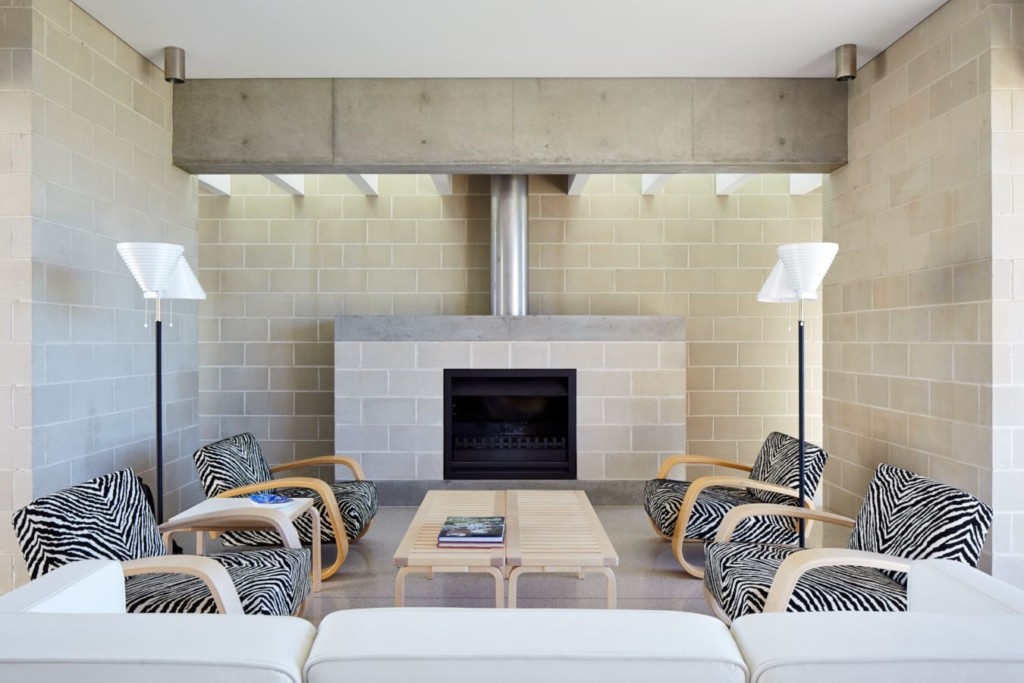
Block House house: Photo taken by Conor Quinn – view of the living room fitted out with Artek armchairs, tables and floor lamps.
The furniture selection for this house was unified by using furniture designed by Finnish architect Alvar Aalto. His zebra striped lounge chairs 400 are placed around two Artek 153A benches. Two Atrek A810 floor lights frame the setting.
Joinery is clean and uncluttered, allowing the spaces to reveal themselves with a sense of calmness, reflected in the wonderful ocean views.
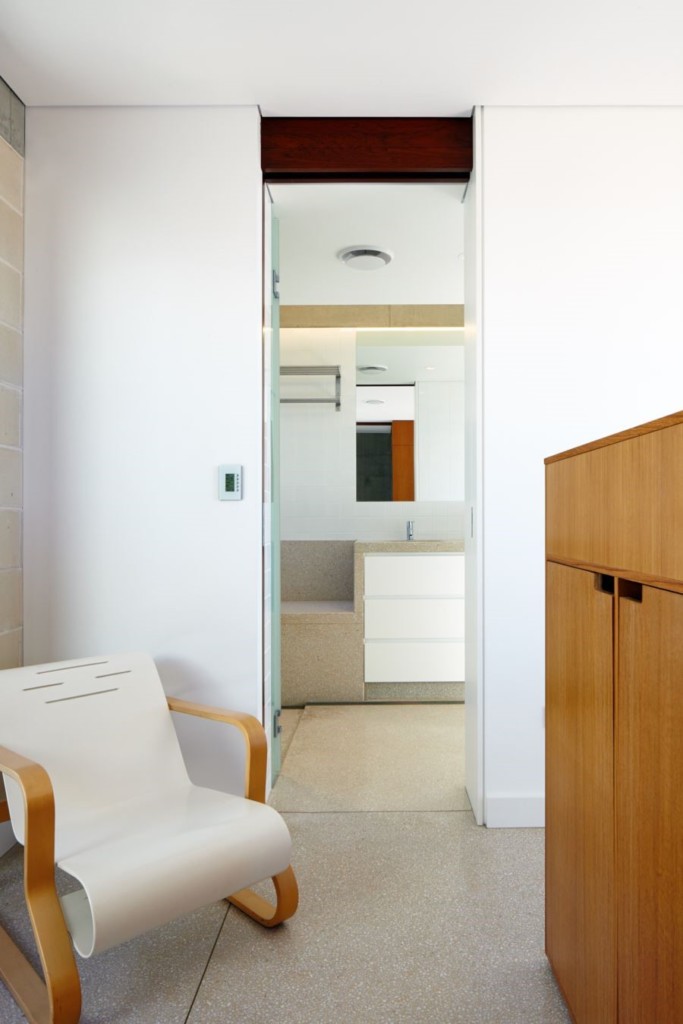 Block House house: Left – An Artek Paimio chair sits outside the ensuite. |
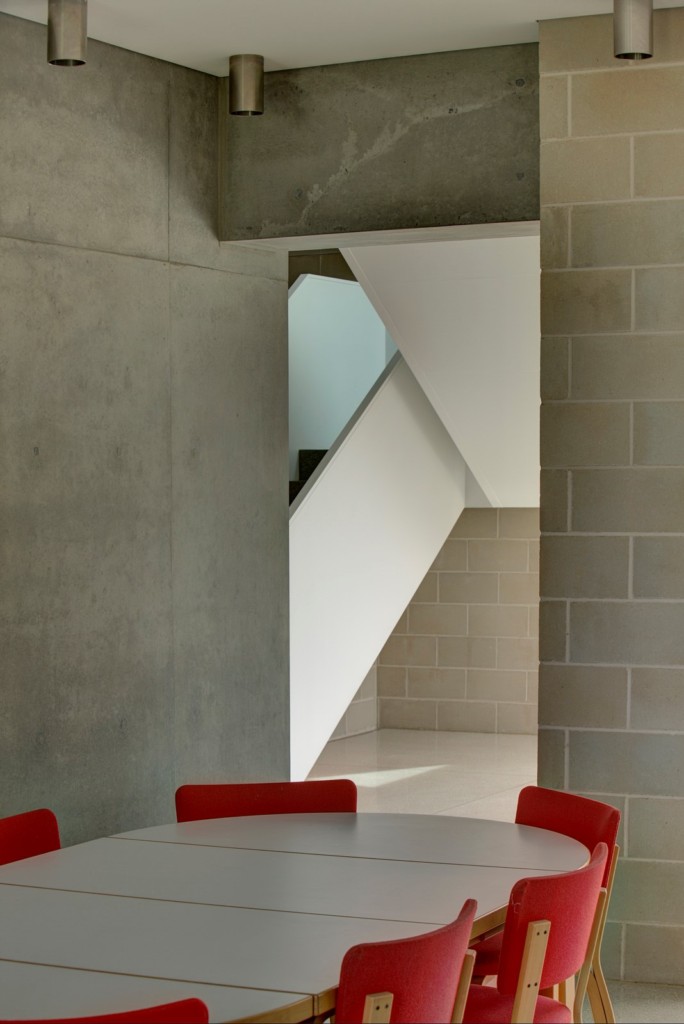 Block House house: Right – Artek dining table and chairs in bright red contrast well with the grey and white background. |
Lastly, our Woollahra House designed in 2002, featured a wonderful double height space in the circulation/living areas for the two adjoining houses (pictured below). The simple palette of limestone tiles, blackbutt veneer and off-form concrete was an easy backdrop to work with.
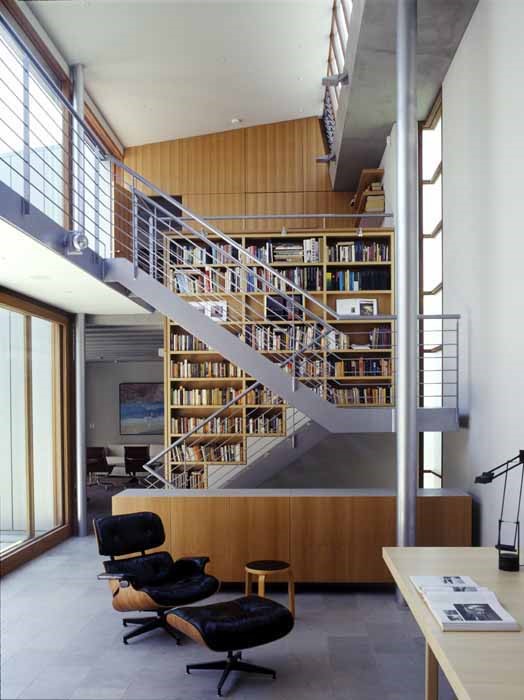 Woollahra house: Left – the void space over a study/dining area with limestone floor tiles, off-form concrete, blackbutt veneer joinery and an eames lounge chair, Artek stool and Tizio lamp |
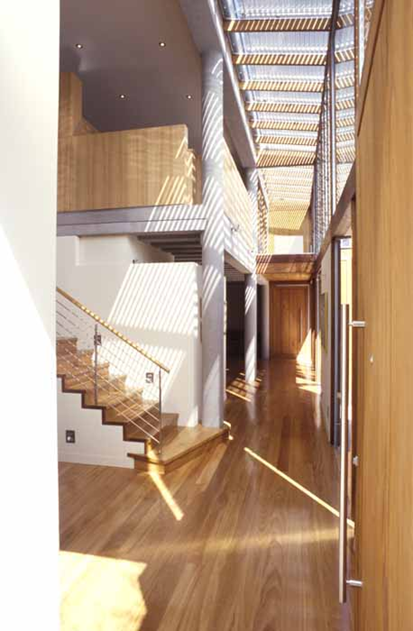 Woollahra house: Right – The neighbouring void space with timber floors and joinery, flooded with natural light adjustable with external louvres. |
The furniture selection and artwork were bought over a number of years (decades!) and were used flexibly throughout the house.
